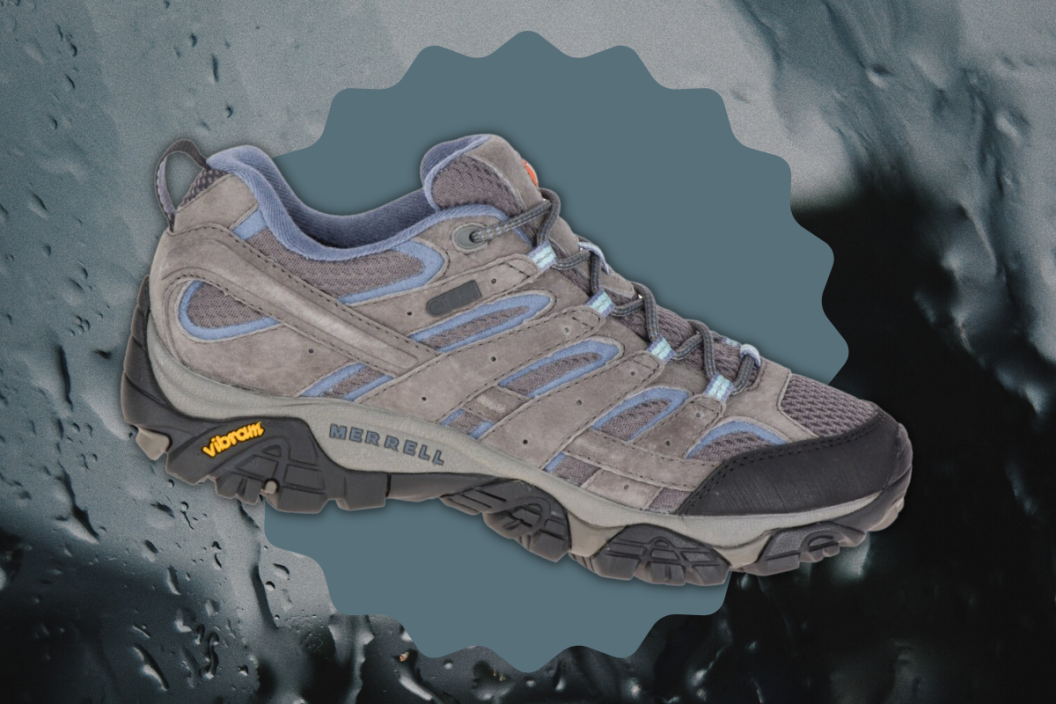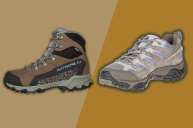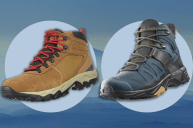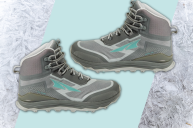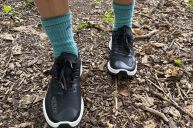Editor's Note: Products featured on Wide Open Spaces are independently selected by our editors. However, when you buy something through our links, we may earn a commission.
Fall doesn't mean the end of hiking season, but it does mean some gear gets swapped out for added versatility and protection against the elements. Waterproof hiking shoes are footwear's middle ground for the shoulder seasons: You get the flexibility and low weight penalty of a standard hiking shoe, along with the added protection of a waterproof membrane. Waterproof hiking shoes also have more rugged outsoles, taking into account changing weather and conditions that require a waterproof shoe.
Waterproof membranes prevent mud, water, and snow from entering your shoe through the upper, keeping your feet drier for longer. (They won't prevent snow or water from coming down the top of your shoe though, so keep that in mind when choosing a low or high-top style.) Waterproofing technology is advanced enough at this point where most membranes are waterproof and breathable — but this also has limits, as a waterproof shoe is inherently less breathable than a non-waterproof model. Note that these are all women-specific waterproof hiking shoes. A women's shoe is built on a different last than a men's shoe, with a deeper / narrower heel cup, lower heel counter, and narrower footbed. Women have a different footstrike from men as well — we tend to pronate differently because the width of our hips impacts the angle that our foot hits the ground. Women's hiking shoes will often adjust to this with varying levels of support throughout the midsole.
I wear waterproof hiking shoes starting in mid-fall, when the snow hits the higher elevations and lower trails are wet from early-season storms and subsequent melt-off. These shoes carry me into the late fall, where I might not be busting through knee-deep snow, but I'm still likely to experience wet feet from slushy trails. Still, every hiker will have a personal preference for their waterproof hiking shoes. Some people appreciate a sturdier shoe with more upper protection like the Merrell Moab, and others will want the ankle protection from a shoe like Garmont's Dragontail Tech GTX. I opt for a lighter, more flexible shoe like the Altra Lone Peak or the La Sportiva Bushido. I often combine hiking with trail running, so wearing a lighter shoe that doesn't compromise on tread is important.
These are some of the top waterproof hiking shoes on the market right now, for a variety of hiking styles, terrain, and weather.
1. The Fan-Favorite Waterproof Hiking Shoe
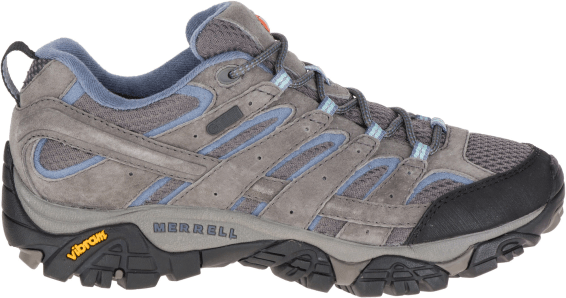
REI
Merrell Moab 2 Waterproof Hiking Shoe (5-12) - REI, $93.69
Take a look around a popular hiking area and I guarantee you'll spot at least a half-dozen pairs of Merrell Moabs heading up the trail. There's a reason for this! Merrell has engineered a classically comfortable, durable hiking shoe that outlasts pretty much every other shoe I've ever tested, both in mileage and sheer category dominance. The Moab 2 Waterproof is nearly an exact replica of the original Moab, just outfitted with a waterproof, breathable membrane. The Moab is built with a sturdy suede upper that won't be as breathable as a mesh-based upper, but does a fantastic job protecting your foot against rocks, roots, and naturally, snow and water. The Vibram outsole has stellar wet and dry traction, and despite the burlier look of these shoes, they're quite comfortable right out of the box if you don't have time to break them in before your next trip. I listed the low top model here, but the Moab comes in a few different heights for varying terrain expectations and weather. I also love that the women's version looks essentially the same as the men's, with some subtle grayish-lavender highlights around the upper detail.
2. Best for Long Day Hikes
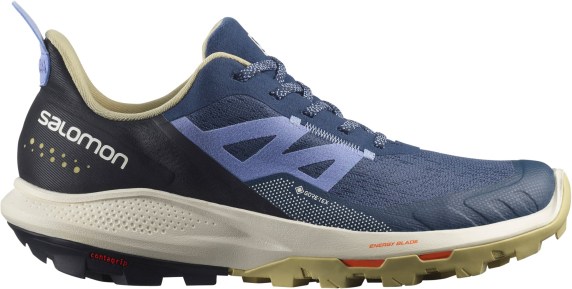
REI
Salomon OUTpulse GTX Hiking Shoe (6-11) - REI, $140
Salomon's combined background in ski boots and running shoes informed the design of the OUTpulse GTX, a highly reactive hiking shoe. This shoe has some of the best energy return of any true hiking shoe I've tested (read: not a combination hiking shoe / trail runner), which comes from their "Fuze Surge" foam compound and reverse camber midsole. Not entirely sure what that means? Just know that the shoe was built to give you the best energy return per footstrike, which also means a good balance between weight savings and support. This isn't the lightest low top shoe on the market, but Salomon engineered this with plenty of midsole support, a secure outsole with deep patterned lugs, and a generous rubber toe cap that doesn't peel off after a season of wear — and protects against nasty stubbed toes.
3. The Best Waterproof Hiking Shoe for Off-Trail Scrambles
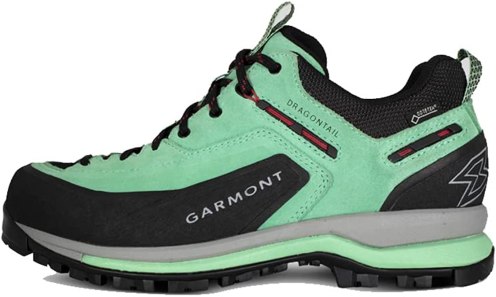
Amazon
Garmont Dragontail Tech GTX Hiking Shoe (6.5-10) - Amazon, $168+
The Garmont Dragontail line does a solid job combining a hiking shoe with the toe reinforcement and outsole of a traditional approach shoe. This combination of styling helps me feel secure on loose, steep terrain — especially trail sections with steep or slick rocks. The Tech GTX is Garmont's burlier, waterproof model in the lineup, a design which includes extra support through the ankle and around the top of the foot. This helps prevent foot sliding and ankle rolls on unpredictable footing. Like the low top, this Dragontail Tech GTX has a narrower wrap through the upper, and an asymmetric cuff, which helps keep your ankle stable without rubbing on the ankle bone. These are stiffer than the more running-styled hiking shoes, so I only wear these when I know I'll be hiking the entire trail, and not running any sections.
4. The Most Comfortable Waterproof Hiking Shoe

Amazon
Altra Lone Peak ALL-WTHR Trail Runner Shoes (6-12) - REI, $170
Altra is a fan favorite for long-distance hikers, and the Lone Peaks are the only shoe I wear for extended backpacking trips. The wide toe box and zero-drop design makes it exceptionally comfortable for the long haul, and they help encourage a natural footstrike. The Lone Peaks are right in the middle of Altra's offerings, with a moderate cushion and support — including a rock plate and a 25mm stack—that holds up on trail but doesn't absorb too much energy. Altra's waterproof shoes have a waterproof / breathable eVent membrane that flexes with your foot and doesn't feel stiff, and it does a great job keeping snow and low slush out of the upper. These are among the lightest and most flexible of my picks here, so you're going to have some compromise with durability. This comes into play in the mileage lifespan of the Lone Peaks. I will typically only get ~300 miles per pair before the outsole wears down and the upper starts separating. For comparison, a more rugged pair of hiking shoes will last you around 500 miles.
5. The Best Lightweight Hiking Shoe
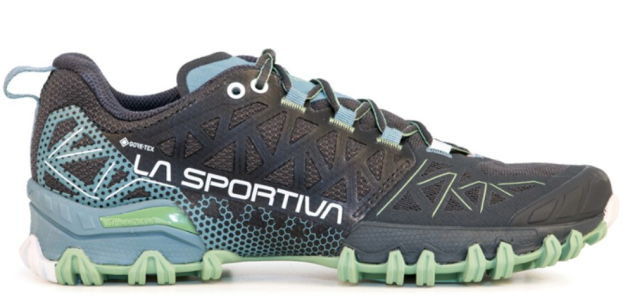
REI
La Sportiva Bushido II GTX Trail-Running Shoe (5.5-11) - REI, $131.19
For hikes with questionable tread where you don't need a full-on winter boot or supplementary traction (which I recommend for winter hikes or seriously icy terrain), the Bushido is a surefire bet. Even in such a lightweight shoe (just over 8 ounces per shoe) La Sportiva has excellent security through the upper, allowing for a flexible and comfortable fit without compromising stability. The waterproof / breathable membrane is built into the lightweight mesh combination upper, which means I can wear these on a warm rainy or muddy day without overheating, but the dual-compound rubber outsoles feel safe on slick trails, whether that's packed snow or melting ice. Since these are so lightweight, it's possible to punch holes through the uppers that a more rugged hiking shoes would survive, but if you're looking for a combination of weight savings and waterproofing, these are tough to beat.
